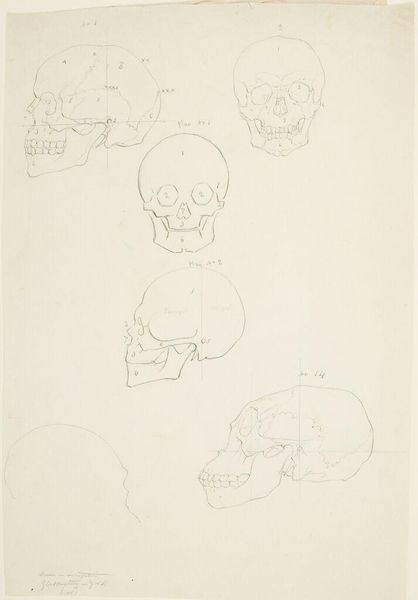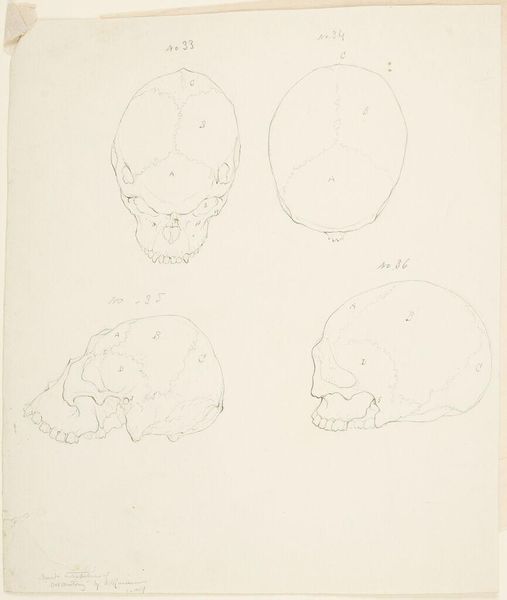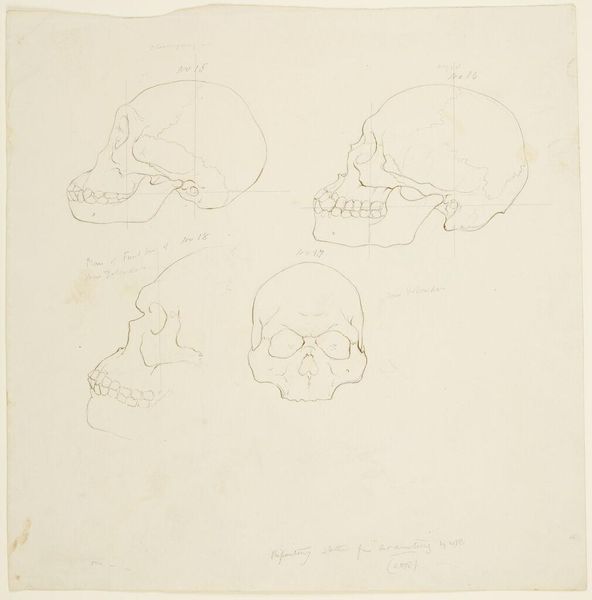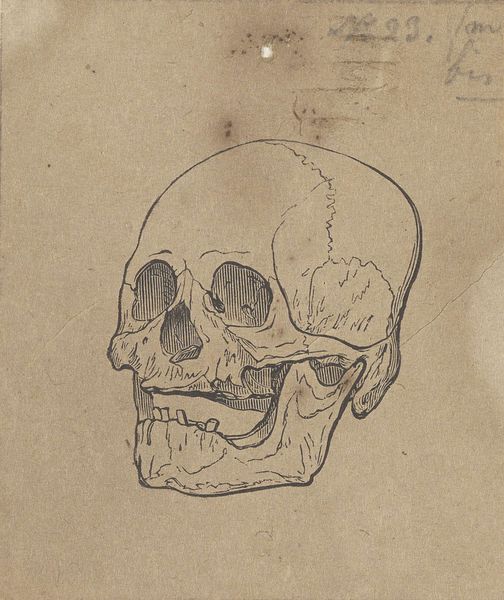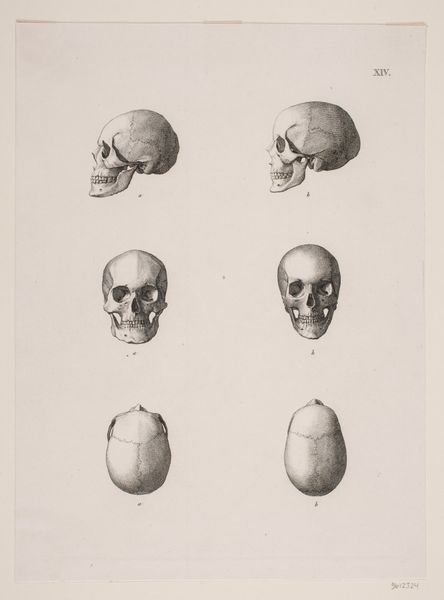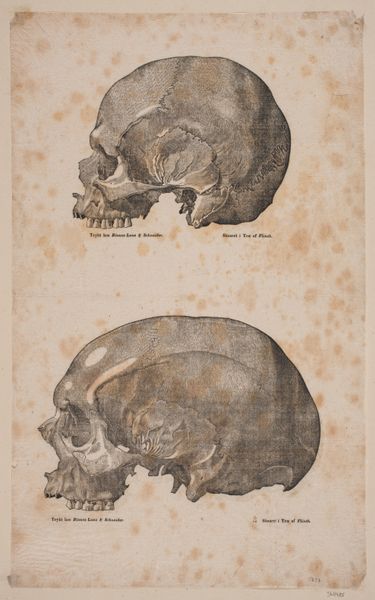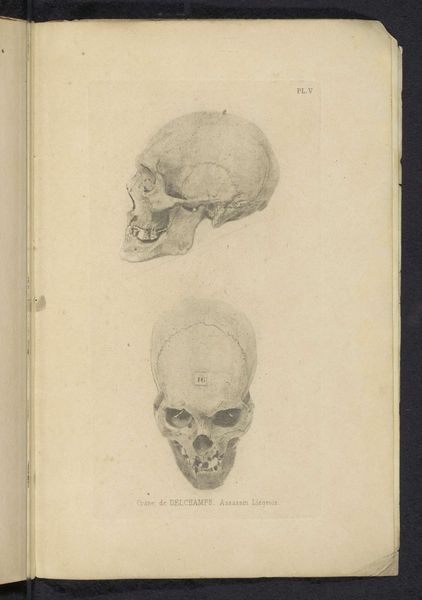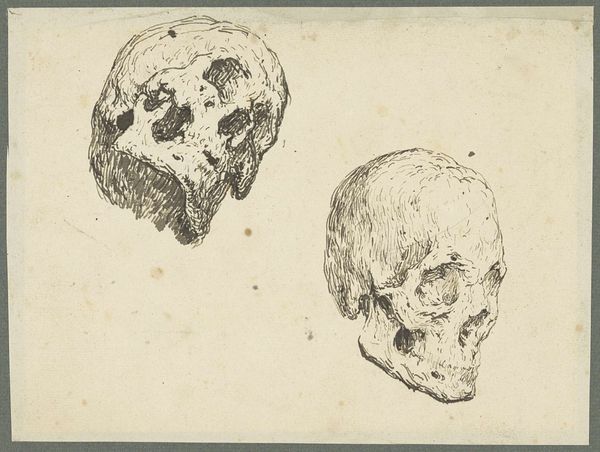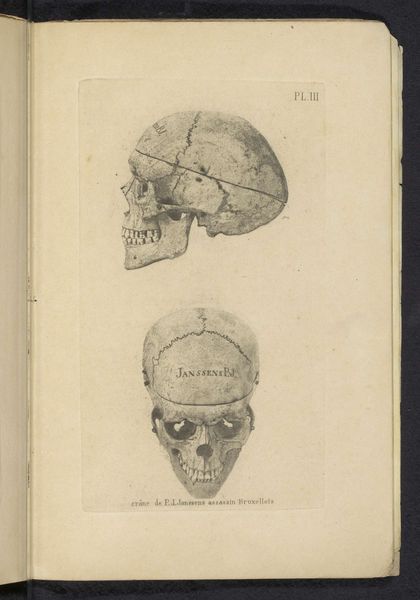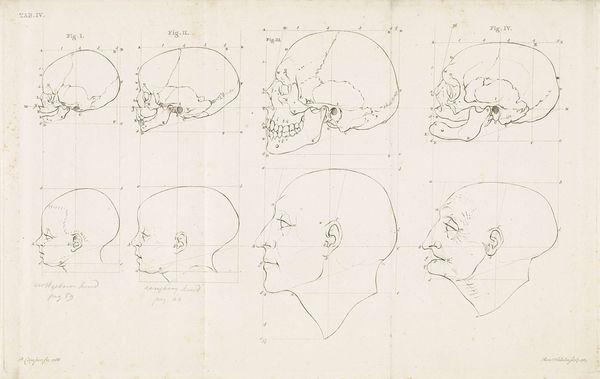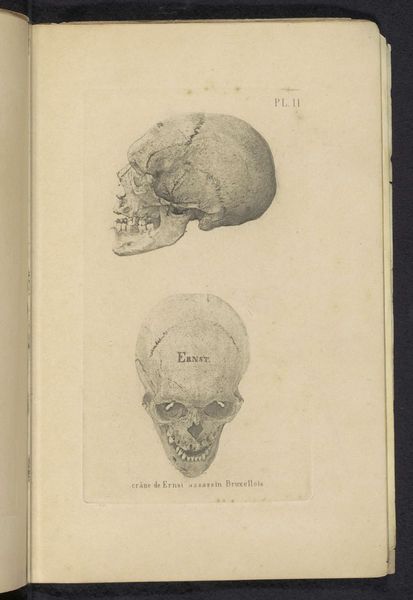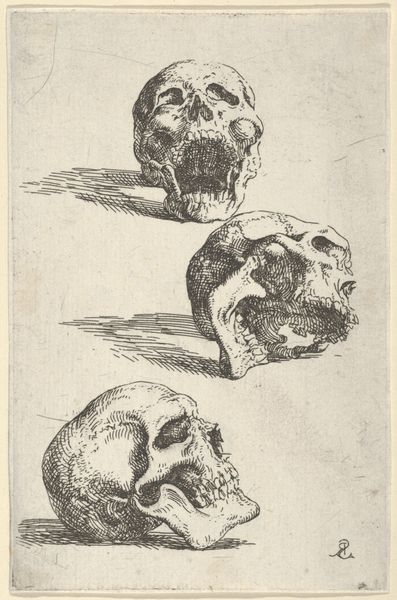
drawing, pencil
#
portrait
#
drawing
#
figuration
#
form
#
pencil
#
line
#
history-painting
#
academic-art
#
profile
#
realism
Dimensions: height 545 mm, width 425 mm
Copyright: Rijks Museum: Open Domain
Curator: Ah, a skull! Sort of gives you the shivers, doesn’t it? But in a good way, like a classic gothic novel. Editor: Indeed. What we are looking at here, currently held at the Rijksmuseum, is a pencil drawing titled “Menselijke schedel,” or “Human Skull” created by Jean Augustin Daiwaille sometime between 1820 and 1833. Curator: It’s interesting; it's not just one skull but three different views. Makes it almost scientific. Though seeing them lined up like that, like specimens, there's this eerie quality to the precise draftsmanship that gives the memento mori theme an… anatomical punch! Editor: Precisely. The artist uses academic realism here. Note how this aligns the drawing with traditions of observation. Think of it not just as an object of contemplation, but of study. Skulls, throughout art history, have often stood as symbols of mortality, but the artist renders all the ridges, sutures and cavities visible with scientific precision. Daiwaille seems less interested in preaching and more interested in portraying observable realities, with all their detail. Curator: But still… even rendered with all this academic exactness, a skull retains an unsettling presence, right? I keep coming back to how death stares back at us. It serves as this blunt, inevitable fact in stark form. Editor: I understand that you would draw from the cultural weight of death symbols here. These were produced in the Age of Enlightenment as a reminder, even in moments of study and artistic creation, that even brilliance, ambition and power all lead to the same final phase of being. In contrast with art depicting romantic heroism or pastoral harmony, works like these remind us of limits. Curator: Makes you wonder who this skull once belonged to. What were their dreams, their sorrows? What were they thinking while alive and creating a drawing such as this? Editor: A moment of quiet introspection… It certainly speaks of a profound recognition of the cyclical nature of existence, a theme Daiwaille, deliberately or not, invites each of us to personally witness and embrace.
Comments
No comments
Be the first to comment and join the conversation on the ultimate creative platform.
